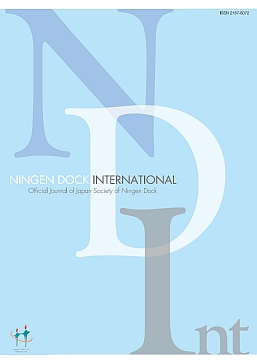Volume 9, Issue 1
Displaying 1-13 of 13 articles from this issue
- |<
- <
- 1
- >
- >|
Original Article
-
2022Volume 9Issue 1 Pages 1-6
Published: 2022
Released on J-STAGE: June 30, 2022
Advance online publication: August 06, 2021Download PDF (502K) -
2022Volume 9Issue 1 Pages 7-13
Published: 2022
Released on J-STAGE: June 30, 2022
Advance online publication: November 10, 2021Download PDF (530K) -
2022Volume 9Issue 1 Pages 14-21
Published: 2022
Released on J-STAGE: June 30, 2022
Advance online publication: November 10, 2021Download PDF (6281K) -
2022Volume 9Issue 1 Pages 22-26
Published: 2022
Released on J-STAGE: June 30, 2022
Advance online publication: November 10, 2021Download PDF (764K) -
2022Volume 9Issue 1 Pages 27-32
Published: 2022
Released on J-STAGE: June 30, 2022
Advance online publication: November 10, 2021Download PDF (520K) -
2022Volume 9Issue 1 Pages 33-46
Published: 2022
Released on J-STAGE: June 30, 2022
Download PDF (928K) -
2022Volume 9Issue 1 Pages 47-53
Published: 2022
Released on J-STAGE: June 30, 2022
Download PDF (64336K) -
2022Volume 9Issue 1 Pages 54-59
Published: 2022
Released on J-STAGE: June 30, 2022
Download PDF (13148K) -
2022Volume 9Issue 1 Pages 60-64
Published: 2022
Released on J-STAGE: June 30, 2022
Download PDF (690K) -
2022Volume 9Issue 1 Pages 65-69
Published: 2022
Released on J-STAGE: June 30, 2022
Download PDF (482K) -
2022Volume 9Issue 1 Pages 70-76
Published: 2022
Released on J-STAGE: June 30, 2022
Download PDF (515K) -
2022Volume 9Issue 1 Pages 77-82
Published: 2022
Released on J-STAGE: June 30, 2022
Download PDF (500K)
Case Report
-
2022Volume 9Issue 1 Pages 83-87
Published: 2022
Released on J-STAGE: June 30, 2022
Download PDF (1667K)
- |<
- <
- 1
- >
- >|
